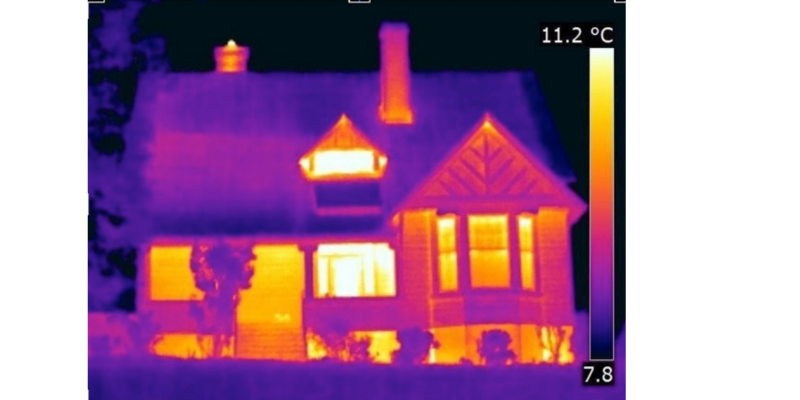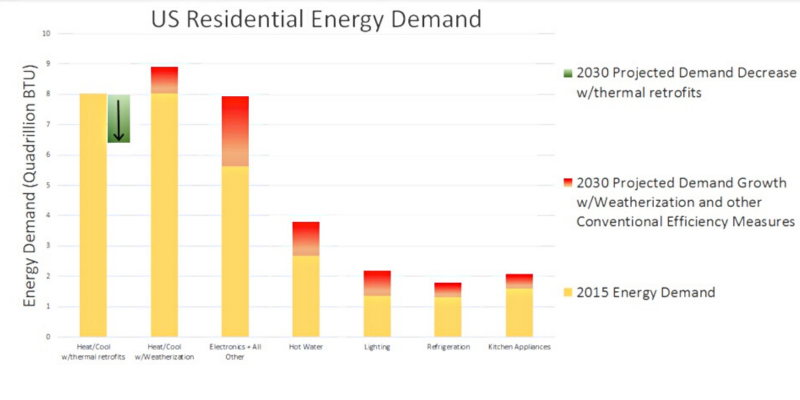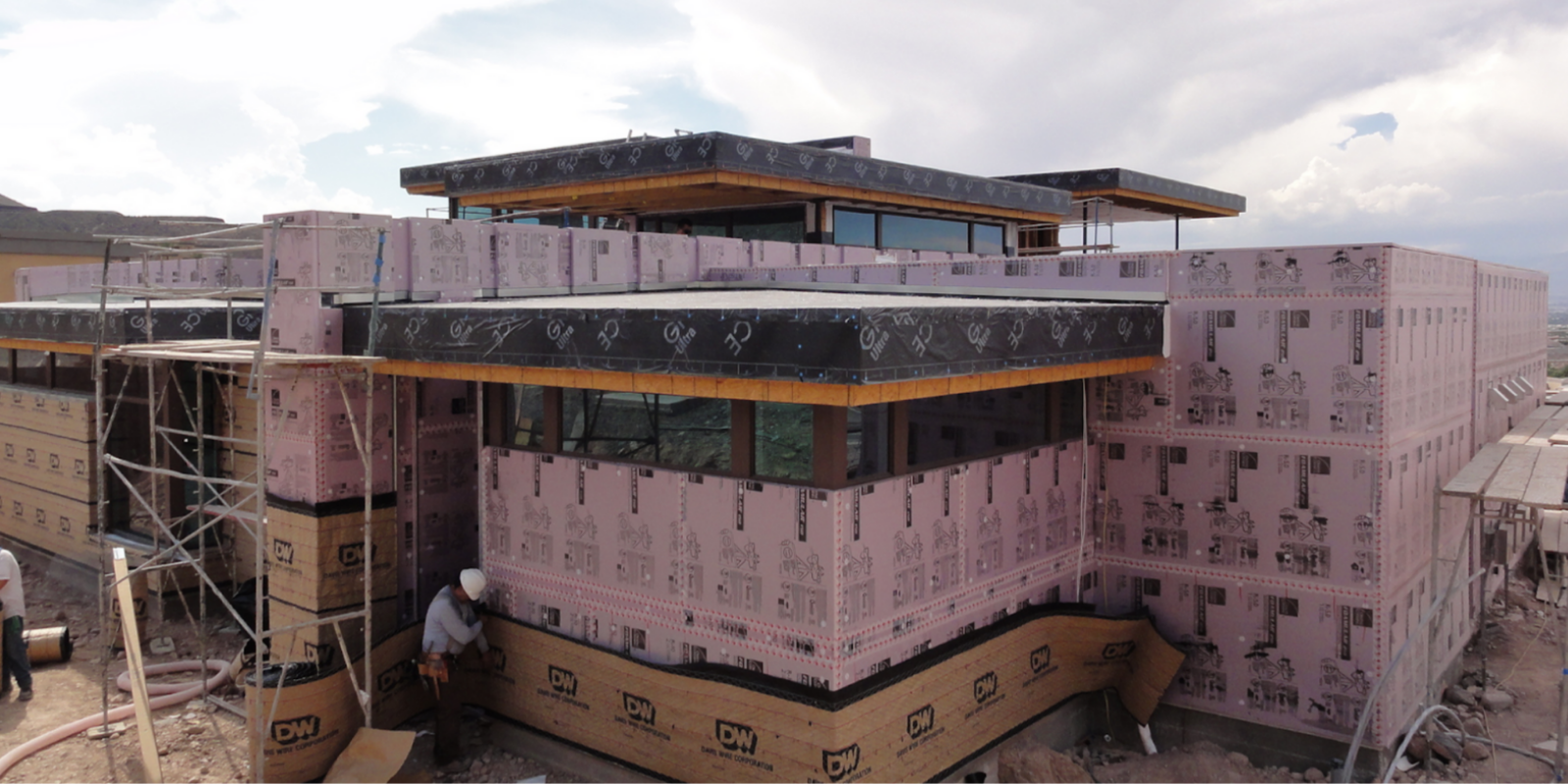Although carbon emissions dropped with the onset of Covid, atmospheric carbon pollution hasn’t noticed the pandemic. The annual increase in parts per million over the past 60 years is about 100 times faster than previous natural increases: the possibility of a 1.5℃ warming peak may have passed.

.
Robust Climate Goals
The Biden administration released robust climate goals and a $14 billion budget proposal for emission reduction and increased clean (renewables and nuclear) electricity production. Without adequate support for clean energy proposals, however, the administration will have to accept a lower budget and more conventional measures like tax incentives and regulation to drive the energy transition. Running against the clean energy goals, future demand for electricity is certain to rise faster with widespread adoption of EV’s and building electrification.
Math Challenges on the Way to a Clean Energy Future
To successfully meet Biden’s goals, the U.S. must cut emissions by 2160 million metric tons (MMt), from 5160 MMt in 2020, down to 3000 MMt by 2030. Also, electricity generation, which was 4100 terawatt hours (TWh) in 2020, must increase from the current 40% clean energy (1700 TWh in 2020) to 3700 TWh clean energy by 2030. This requires at least 2000 new TWh to be added to the grid in 8 years —- more than doubling today’s clean energy production.
A clean electricity future requires widespread replacement of fossil fuel generating facilities with solar and wind farms. A logical start would be to close all coal plants, which produce 3 to 5 times more emissions per TWh than natural gas. Although half of the 500 U.S. coal plants are on track for closure, the rest are still profitable and essential to providing a reliable supply. The unlikely scenario of closing all coal plants in 8 years would cut less than half of the 2160 MMt needed.
In 2020, coal generated 23% of the electricity supply, about 950 TWh. In contrast, solar provided only 2.3% (95 TWh) of the 2020 supply. Even if 950 TWh of solar could be financed, construction would require more than a million acres (4 times the size of Los Angeles) and nearly a billion panels. A grid powered by 23% solar cannot be built in 8 years, and it would only provide half of the 2000 TWh of new clean electricity needed for the 2030 goal. If wind was assigned to provide the other 1000 TWh, current generation of 340 TWh from 65,000 turbines would have to triple with 130,000 new turbines.
How the Building Industry Can Solve this Math Problem
Because emissions and energy demand are too high, and clean energy powers only 40% of the grid, Biden’s 2030 goals cannot be achieved with existing decarbonization measures. In addition, a clean energy future requires belt-tightening on the demand side. One untapped option involves improving residential thermal performance. On average, more than half of a U.S. household’s annual energy consumption is for space heating and air conditioning. Much of this is lost via thermal leakage.

A typical house needs to be reheated every 6 minutes, compared to every 60 minutes for a thoroughly air- sealed and insulated home, such as an airtight house from Passivhaus. Good thermal performance has been widely demonstrated in “zero energy ready” and “zero net energy” new construction. Although uncommon, proven thermal systems can also be installed in existing homes.
The emphasis of more than 600 utility efficiency programs is promoting weatherization and high efficiency products (light bulbs, appliances and HVAC, often ENERGY STAR) rather than targeting thermal leakage. In view of residential demand trends, increasing the thermal efficiency of existing homes (100 million built before 1970) is the only option for pulling excessive demand into better balance with a clean supply.

Fortunately, local building contractors can use commercially-available products to eliminate wasted energy. Thermal retrofits are labor-intensive, producing at least $5000 in local payroll per project. A continuous thermal seal cuts a home’s demand by at least 5000 KWh (17 million BTU) every year for the average home’s long life. A home’s reduced energy demand can be measured and monetized with home performance scoring, such as the RESNET HERS index.
Eliminating thermal leakage is an overlooked opportunity for utilities to decarbonize and create unsubsidized jobs. Space conditioning energy drives up a utility’s expenses during peak demand, when energy cost can be double. At the right price, a utility could invest in demand reduction from local contractors rather than buying more energy. Because a retrofit relates to the home rather than the occupant, thermal retrofits can be offered inclusively to all customers without new expense. This type of on-bill financing has been demonstrated by the PAYS efficiency program , which keeps the customer’s bill at its historic level until the retrofit loan is paid. Improved dwelling comfort, value, and resilience are additional benefits of “thermal optimization”, introduced in this 2016 Climate Institute report.
Retrofit cost depends on location and techniques, and the utility’s choice of performance level: the feasibility of utility-financed thermal retrofits is locally determined. Community leaders, local organizations, elected officials and building associations need to encourage contractors to engage energy suppliers about financing demand reduction, and the potential for new jobs. Builders, utilities, homeowners, communities and the world all stand to gain.
About the Author: Rick Barnett is the owner of Green Builder (1996), a retired retrofit contractor, and was a key figure in the early `80’s expansion of the Oregon waste hauling industry’s recycling programs. He holds a B.A. in Psychology and an Interdisciplinary Master’s in Environmental Management from Oregon State University.

